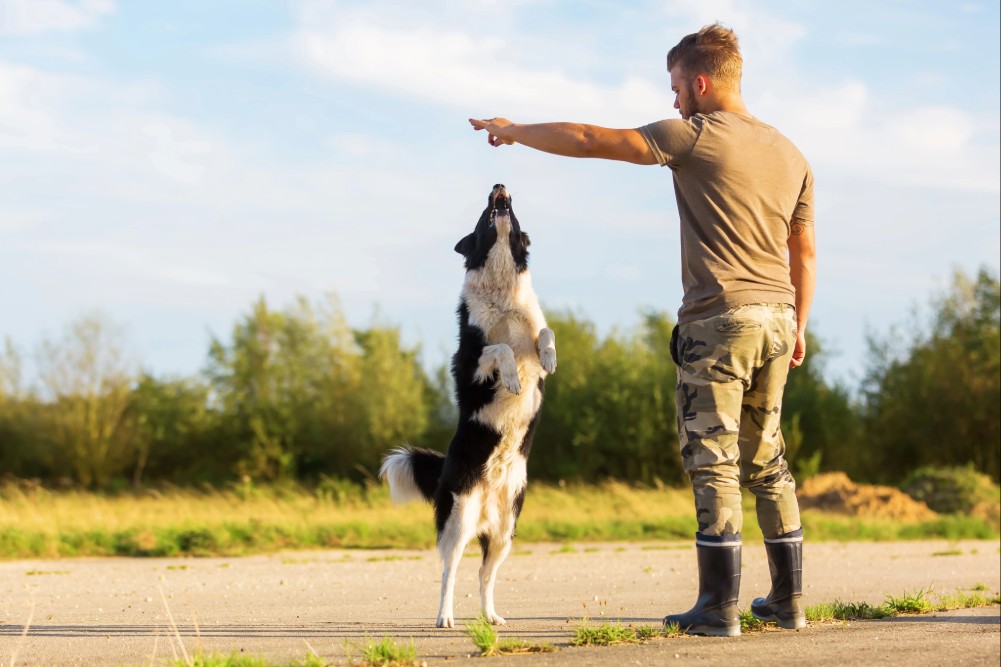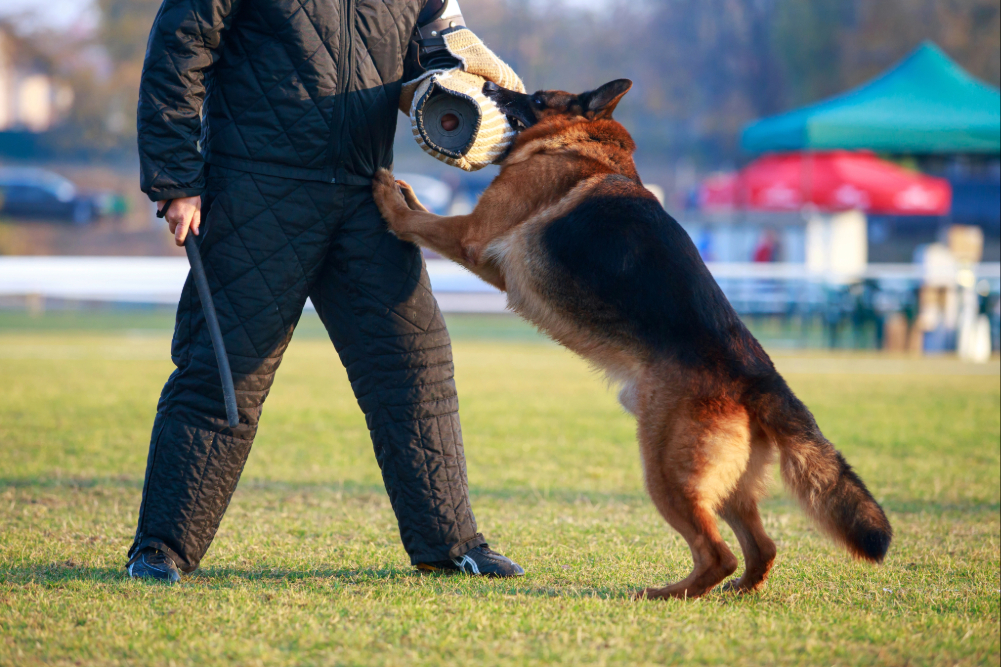
Training your dog is one of the most rewarding experiences you can share with your furry companion. If you are looking to teach your dog basic obedience or work on advanced skills like service dog training or protection dog training, a well-structured training plan is important. The following tips will help you navigate the best dog training and build a strong bond with your pet.
Focus on Consistency
Consistency is the foundation of any successful dog training plan. Using the same commands and rewards every time will help your dog learn quickly and effectively.
Dogs thrive on routine, so maintain consistent sessions and reinforce good behavior regularly. Consistent training allows your dog to understand what is expected, leading to improved results over time.
Repetition is key in dog training. The more consistent you are with commands and rewards, the faster your dog will catch on. Over time, your dog will associate specific actions with rewards. This makes the training process smoother for both of you.
Use Positive Reinforcement
Positive reinforcement is one of the most effective tools in dog training. Reward desired behaviors immediately with treats, praise, or play. This encourages your dog to repeat good behavior while reinforcing a positive learning environment. Rewarding good behavior builds trust and strengthens the bond between you and your dog.
While it is tempting to focus on correcting bad behavior, it is far more effective to reward the good. Positive reinforcement helps to build trust and respect between you and your dog. This will create a positive learning environment that encourages progress.
Be Patient and Calm
Training takes time, and patience is essential throughout the process. Dogs need time to absorb new information and adapt to new routines. Maintaining a calm demeanor helps your dog remain focused and reduces stress. Taking breaks during sessions can prevent frustration and maintain a positive atmosphere.
Patience will help your dog learn at their own pace. Allowing your dog to make mistakes and rewarding their progress will help build a strong, trusting relationship. This makes the training process smoother and more enjoyable for both of you.
Start with Basic Commands
Before moving on to more advanced training, it is important to master the basics. Start with simple commands like “sit,” “stay,” and “come.”
These fundamental commands form the foundation for more complex training and help establish communication between you and your dog. Mastering basic commands can also improve your dog’s behavior in everyday situations.
Once your dog has a solid understanding of basic commands, you can move on to more advanced training techniques like service dog training or protection dog training. Building on these basic skills will make the transition to more complex training smoother and more effective.
Socialize Your Dog Early
Early socialization helps your dog develop confidence and comfort in new situations. Exposing your dog to different people, environments, and other animals reduces the risk of fearful or aggressive behavior later on. Trips to parks or controlled introductions to other pets help your dog learn to respond appropriately in diverse situations.
Socializing your dog helps them learn how to behave appropriately in different environments. It also strengthens their bond with you, as they learn to trust your guidance and feel secure in unfamiliar situations.
Train in Short Sessions
Dogs have limited attention spans, so keeping training sessions short and focused is key to success. Aim for 10 to 15-minute sessions to maintain your dog’s interest and prevent fatigue. Frequent, short sessions are more effective than long, drawn-out ones because they help your dog stay engaged and enthusiastic throughout the process.
Training in short bursts allows for better retention of information and helps reinforce newly learned behaviors more efficiently. Short sessions also reduce stress, keep the dog motivated, and prevent boredom or frustration.
Incorporating brief play breaks or rewards between exercises can further enhance focus and make learning a positive, enjoyable experience for both dog and owner.
Correct Behavior Immediately
When your dog exhibits undesirable behavior, it is important to address it immediately. Timing is needed in dog training, as correcting behavior too late can confuse your dog. Instead of waiting until later, offer a firm but gentle correction as soon as the undesirable behavior occurs. This helps your dog understand what they did wrong and why it is not acceptable.
While it is important to correct bad behavior, always follow up with positive reinforcement when your dog exhibits the desired behavior. This balanced approach will help your dog learn more effectively and develop a stronger understanding of right and wrong.
Incorporate Variety into Training
Dogs are intelligent and can quickly get bored with repetitive routines. To keep your dog engaged, incorporate variety into your training sessions. Try different locations, introduce new challenges, and switch up the training activities. Variety keeps the training process exciting for your dog, making them motivated and eager to learn.
Adding variety also helps reinforce the behaviors your dog has learned in different environments. This will make your dog more adaptable and capable of responding to commands in real-world situations, such as service dog training or protection dog training scenarios.
Work on Leash Training
Leash training is one of the most important skills for any dog, especially for service dog training. A well-behaved dog on a leash makes walks more enjoyable and manageable.
Start by teaching your dog to walk calmly beside you, without pulling or lunging. Use treats and praise to reinforce good leash manners, and avoid yanking on the leash, as this can create tension.
Leash training also improves your dog’s focus and communication with you. It establishes you as the leader, while giving your dog the freedom to explore their surroundings within controlled limits. Regular practice in different environments, such as parks, streets, and busy areas, helps your dog generalize these skills and remain composed in a variety of real-world situations.
Set Realistic Expectations
When training your dog, it is important to set realistic goals and expectations. Dogs learn at different rates, and some may need more time to grasp certain concepts. Be patient and understand that every dog has their own pace. Celebrate small victories along the way and adjust your goals as necessary to fit your dog’s individual learning style.
Having realistic expectations will help reduce frustration and make the training process more rewarding. Focus on progress, not perfection, and remember that every dog has the potential to succeed with the right guidance.
Invest in Professional Training
While it is possible to train your dog on your own, there are times when professional help is necessary. If you are struggling with specific issues, such as aggression, anxiety, or advanced training like service dog training or protection dog training, seeking the help of a professional can make all the difference. A skilled trainer can offer personalized advice and techniques tailored to your dog’s unique needs.
Investing in professional training sees to it that you and your dog are on the right path. Professional trainers bring a wealth of experience and knowledge, helping you achieve your training goals more efficiently and effectively.
Ready to Begin Your Dog Training Journey?
Are you ready to begin your dog training journey? At Controlled K9, we specialize in providing personalized K9 training that is tailored to your dog’s specific needs. If you are looking for board and train programs, service dog training, or protection dog training, our expert trainers are here to guide you every step of the way.
We are committed to helping you achieve the best possible results for both you and your dog. Contact us today to schedule your evaluation and take the first step toward a well-trained dog that enhances your daily life.




Comments